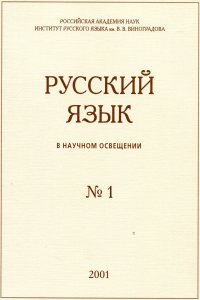Линейное положение прилагательных в древнерусском: возвращаясь к статье Д. Ворта
Abstract:
A paper published by Dean Worth in 1985 (‘Animacy and adjective order: the case of новъгородьскъ. An explanatory microanalysis’) presented some observations on word order in Old Russian noun-adjective phrases. The “microanalysis” was based on phrases with the adjective novъgorodьskyi ‘novgorodian’ in Novgorod parchment documents of the 12th-15th centuries. In order to evaluate Worth’s statements correctly, we analyze the data used in his paper. At least one finding has been clearly borne out by our previous studies: attributes tend to stand after the preposition (if there is one). The impact that case has on adjective placement seems to be underestimated by D. Worth, while he overestimated more doubtful correlations of adjective position with agentivity and animacy. Actually, agentivity seems to have nothing to do with linear order in noun phrase, while the marked correlation between noun animacy and postposition of attribute could be an epiphenomenon, due to two word combinations prevailing in the data: toponyms (with mostly preposed attributes) and official position names (with mostly postposed attributes).


